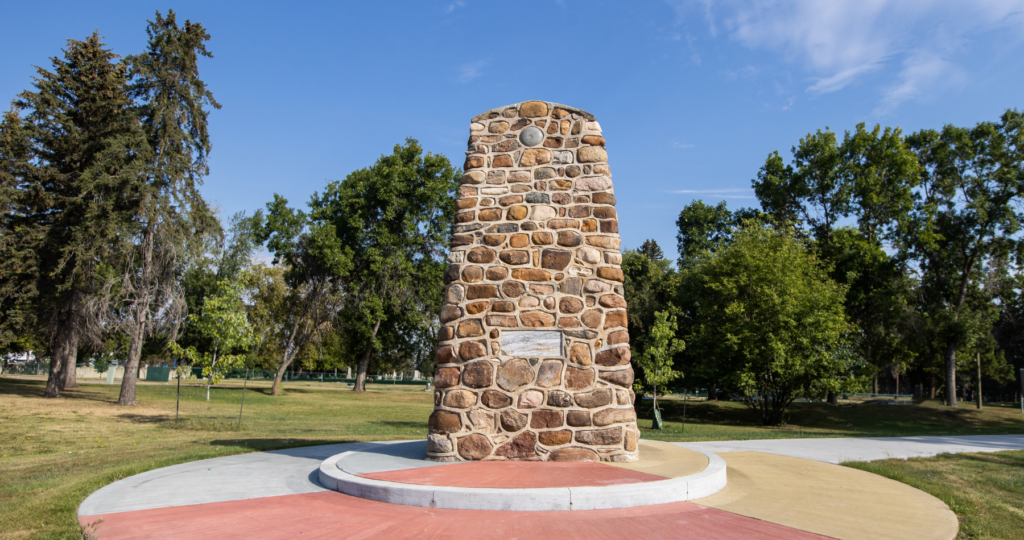Post Category : Local Archaeology Special Finds
Ground Stone Artifact
At our Archaeology Roadshow in Lac La Biche, AB in fall 2015 a local resident brought in an interesting artifact that was found on a farm near Camrose, AB in the 1940s. The artifact is a 5 and 1/2” round stone with a wide, shallow depression on one side and a smaller lipped depression on the other side. These depressions were formed by grinding or pecking at the stone with a harder stone.


Initial interpretation of the artifact was that it was some sort of bowl or plate. However, there are some problems with this interpretation. First, it would not function well as a bowl due to the shallow depth on the “top” side of the artifact. Second, it also requires a lot of effort to grind these concave features into the stone for something as simple as a serving vessel. Traditionally it was thought that a vessel of this type would not serve much purpose to Native person prior to the arrival of Europeans. Before European contact, people were mobile hunters and it would not make sense to create a plate to be transported from location to location. However, this stereotype has been challenged by recent finds such as carved bison effigies and other robust tools, such as mauls, that were typical of the tool kit of North America’s First Nations.
The “base” of the artifact may be a clue to the age of the artifact. Upon viewing the artifact, Jack Brink, Curator of Archaeology at the Royal Alberta Museum, noted that “the bottom view (of the artifact) shows a ring or foot carved for the bowl to stand on. This is identical to a European bowl or plate. It would serve no purpose to a Native person who would be using a bowl on the ground. Makes me think this, if not made by a European, at least dates to the time after contact (with Europeans).”
The artifact could also be a grinding platform similar to a mortar and pestle or mano and metate popular in Mesoamerican cultures. These artifacts are used to grind down grains and seeds. A similar artifact was found by a farmer near Eaglesham, AB. However, This artifact differs greatly in size and shape from the artifact brought in to our Archaeology Roadshow.

Another interpretation was suggested by Gabriel Yanicki, a PhD student at the University of Alberta. Yanicki, specializing in prehistoric gambling and games, suggests that the artifact may be a Chunkey Stone, typically associated with the Mississippi cultures in the eastern United States. The game of Chunkey involves the rolling of a stone disk while people attempt to hit the stone with spears or sticks. He went on discuss the aspects of the artifact that suggest it may be a Chunkey Stone, “at about 5 ½ inches you’re dead on for size (2-6” most common), and hard granitic or basaltic rocks aren’t unknown.” In terms of style, Yanicki states “the side where the concavity extends almost to the edge is typical of the Cahokia type, while the smaller raised concavity appears in the Salt River and Jersey Bluff types.” However, unlike typical Chunkey Stones this artifact is asymmetrical.
The artifact may also be some sort of ritual or offering platform that may have served a one time purpose. The owner of the artifact is currently talking to Augustana University in an effort to donate the artifact. The “plate” can then be tested for residue analysis to determine if there is evidence of burning or food processing. Megan Caldwell, of Augustana University is also interested in determining the origin of the rock as it appears to be similar to rocks from British Columbia.



